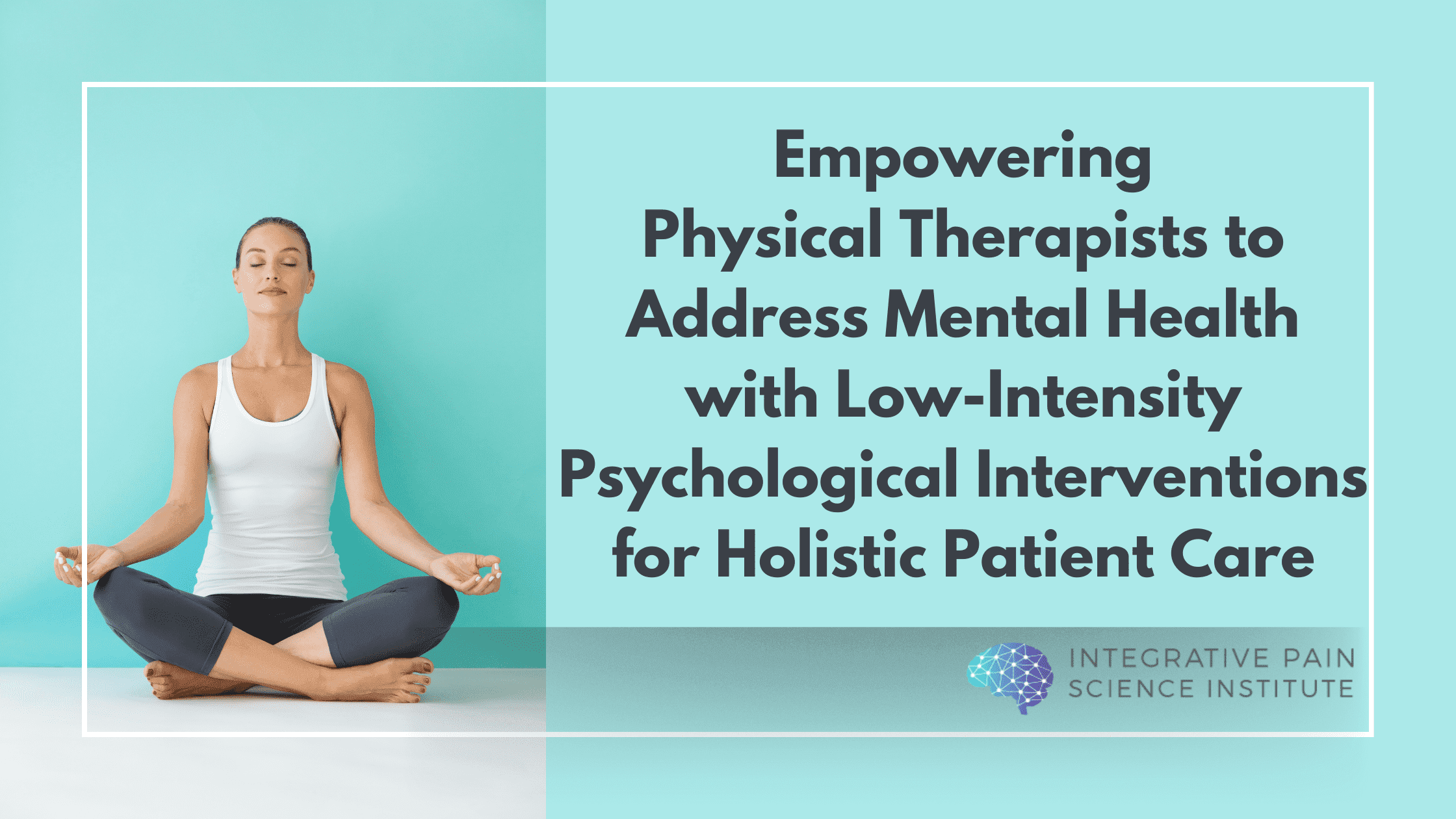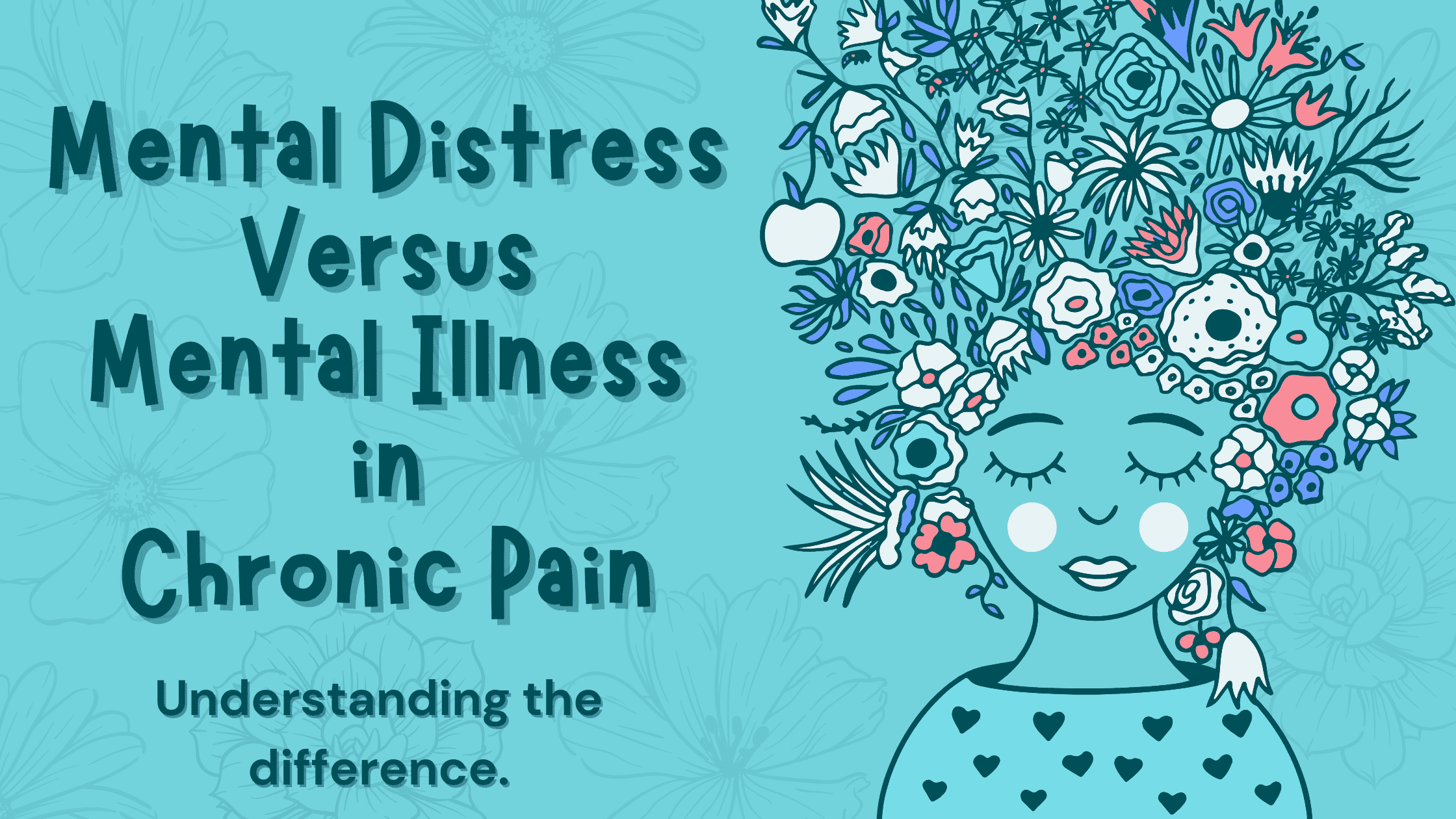Low back pain is the leading global cause of years lost to disability and a pressing public health concern (1). Pharmacological and surgical management of chronic low back pain (CLBP) are largely ineffective long term and are associated with significant health problems. Accordingly, newer guidelines promote self-management strategies, physical and psychological therapies, and diverse forms of integrative/complementary medicine (such as massage, Tai Chi, yoga, and acupuncture), while encouraging active treatments that address psychosocial factors and focus on improvement in function (2).

Although physical therapists successfully treat many patients with CLBP, the practice’s conventional focus on exercise and pain reduction leaves unaddressed important elements that permeate an individual’s pain experience such as fear of movement, pain catastrophizing, depression and low self-esteem.
Pharmacological and surgical management of chronic low back pain (CLBP) are largely ineffective long term and are associated with significant health problems Share on XThese aspects can be targeted through cognitive and behavioral strategies such as Acceptance and Commitment Therapy (ACT) and Cognitive Behavioral Therapy (CBT). ACT branched off from more traditional CBT in the 1980’s, moving away from CBT’s focus on challenging and disputing distressing thoughts and seeking instead to work with them to break their dominance. ACT focuses on improving functioning, rather than reducing pain, using acceptance, mindfulness strategies and values-based action (3). Although both CBT and ACT have proved to be beneficial for chronic pain, translation of these approaches into physical therapy practice has been challenging.
Fresh research now suggests that integrating ACT into physical therapy may be a valid strategy to improve function and quality of life in people with CLBP.

Physical Therapy for CLBP: Is PACT Superior to Usual Care?
Results of a recent clinical trial comparing Physical Therapy informed by Acceptance and Commitment Therapy (PACT) against standard care Physical Therapy for patients with CLBP were recently published in the Journal of Pain (4).
The study included 248 adults (aged ≥18 years; average = 48 years old; 59% women) with non-specific CLBP lasting > 12 weeks, referred to Physical Therapy clinics within public hospitals in England, UK. Participants had no specific spinal pathologies and reported a score of ≥3 points on the Roland Morris Disability Questionnaire (RMDQ). Those with severe psychiatric illness and/or current drug or alcohol misuse, or who had received multidisciplinary CBT pain management or other physical therapy treatment in the previous 6 months, or injection therapy within the last 3 months, were excluded.
Study participants were randomly allocated to either PACT or usual care (UC) Physical Therapy:
PACT: Participants (n = 124) received a brief physical therapy intervention, guided by principles of ACT, designed to promote self-management (5). PACT consisted of two 60-min face-to-face sessions two weeks apart, plus one 20-min telephone call one month later. Treatment included:
- “An initial physical assessment with feedback, identification of value-based goals, individualized physical exercise prescription, addressing barriers and facilitators to self-management, and skills training to promote psychological flexibility”. Manual therapy was not delivered.
UC PT: Participants (n = 124) in the UC physical therapy received on average three 30-min face-to-face sessions and one and a half 60-min classes. UC included:
- “… any treatment considered suitable by the treating physical therapist, including individual physical therapy and/or back rehabilitation classes, dynamic control classes, manual therapy and hydrotherapy”.
Self-reported questionnaires were completed by patients at baseline, 3 (primary end-point) and 12 months, either online or by mail.
Primary outcome was patient-reported functioning (RMDQ) at 3 months.
Secondary outcomes included all core domains recommended in chronic pain research (IMMPACT recommendations)(6). These were:
- The Patient Health Questionnaire-9 (PHQ-9), to assess depression
- The Generalized Anxiety Disorder-7 (GAD-7), to assess anxiety
- The Patient Specific Functional Scale (PSFS) and Work and Social Adjustment Scale (WSAS) to assess functioning
- A life satisfaction scale, and a pain numeric analogue scale to assess pain severity
- Global Improvement (7), Outcome Satisfaction (8), and Treatment Credibility questionnaires.
- Two health-related quality of life measures, the EQ-5D-5L and the SF-12 forms, were used for analysis of cost-effectiveness
- Process variables (therapeutic mechanisms of action) were measured through the Chronic Pain Acceptance Questionnaire-8 (CPAQ-8), the Committed Action Questionnaire-8 (CAQ-8), and the Pain Self-Efficacy Questionnaire (PSEQ).
Overall, 204 (83%) patients completed follow up assessments at 3 months and 181 (73%) at 12 months.
Study results. While both groups showed improved function at 3-month follow-up, participants that received PACT scored significantly better than those that were given UC. Specifically, the RMDQ score decreased by 3.4 points in the PACT group, compared to 2.1 in the UC group (a change of 2-3 units in the RMDQ is considered clinically meaningful). Meanwhile, the improvement was maintained at 12-month follow-up in both groups, with slightly higher (but-non-significant) scores reported for PACT. Other findings included:
- Pain related interference was significantly reduced in the PACT group at 3 but not 12 months.
- PACT was rated as having greater credibility than UC
- The economic impact was similar for both PACT and UC
- PACT patients also reported better outcome on the PSFS, SF-12 physical health scale, and WSAS at 3, but not 12 months
On the other hand, no group differences were observed for measures of pain, mood, self-efficacy, or the ACT process variables (acceptance [CPAQ-8] and committed action [CAQ-8]) at 3 or 12 months.

In this regard, the authors point out that:
“PACT was designed to shift the focus from pain to daily functioning and as reducing pain was not the primary aim of treatment, it was not surprising that there was no difference between groups.”
On the other hand, the fact that measures of acceptance and committed action, two key ACT principles, did not differ between groups, cast doubts about the specific mechanisms that made PACT superior to UC.
Although physical therapist adherence to the PACT intervention was high (overall 88% treatment fidelity achieved across sessions), the fidelity analysis showed that only a few core elements of ACT were delivered. The authors point out that the brief ACT training “was not designed to turn physical therapists into ACT practitioners”; further training and increasing hands-on experience are likely to improve results in individual and institutional Physical Therapy practices.
Importantly, the authors note that “Feedback within training sessions indicated that none of the methods trained deviated substantially from what the physical therapists would consider within their scope of practice.”
Dr. Tatta’s simple and effective pain assessment tools. Quickly and easily assess pain so you can develop actionable solutions in less time.
PACT = Better Life Despite Chronic Pain
This study was the first to directly test a protocol that combined ACT and Physical Therapy to treat CLBP. Its results are consistent with previous research that showed that ACT can be used to address the psychological comorbidities associated with chronic pain (9, 10). The improvement observed is also consistent with that reported in a recent meta-analysis of CBT for non-specific low back pain, which favored CBT over other recommended active treatments based on CBT’s small to moderate effect sizes (11).
The validity of cognitive behavioral approaches to improve functioning, mood, and quality of life of people with chronic pain is now supported by substantial research. Tangible improvement in the management of chronic pain should come from adequate training and practice-informed refinement and implementation of the core ACT principles into Physical Therapy, along with proper tools to identify patients/clients that are more likely to benefit from this approach (12).
New course now open– ACT in Motion: A Pain Exposure Protocol: Move patients from fear and avoidance to awareness and acceptance using experiential exercises, movement, and values.
REFERENCES:
1- Buchbinder, R., van Tulder, M., Öberg, B., Costa, L. M., Woolf, A., Schoene, M., … & Maher, C. G. (2018). Low back pain: a call for action. The Lancet, 391(10137), 2384-2388.
2- Foster, N. E., Anema, J. R., Cherkin, D., Chou, R., Cohen, S. P., Gross, D. P., … & Turner, J. A. (2018). Prevention and treatment of low back pain: evidence, challenges, and promising directions. Lancet, 391(10137), 2368-2383.
3- McCracken, L. M., & Morley, S. (2014). The psychological flexibility model: a basis for integration and progress in psychological approaches to chronic pain management. The Journal of Pain, 15(3), 221-234.
4- Godfrey, E. L., Wileman, V. A., Galea Holmes, M., McCracken, L., Norton, S., Moss-Morris, R., … Critchley, D. J. (2019). Physical therapy informed by Acceptance and Commitment Therapy (PACT) versus usual care physical therapy for adults with chronic low back pain: a randomised controlled trial. The Journal of Pain.DOI: https://doi.org/10.1016/j.jpain.2019.05.012
5- Godfrey, E., Holmes, M. G., Wileman, V., McCracken, L., Norton, S., Moss-Morris, R., … & Critchley, D. (2016). Physiotherapy informed by Acceptance and Commitment Therapy (PACT): protocol for a randomised controlled trial of PACT versus usual physiotherapy care for adults with chronic low back pain. BMJ open, 6(6), e011548.
6- Dworkin, R. H., Turk, D. C., Farrar, J. T., Haythornthwaite, J. A., Jensen, M. P., Katz, N. P., … & Carr, D. B. (2005). Core outcome measures for chronic pain clinical trials: IMMPACT recommendations. Pain, 113(1), 9-19.
7- Bombardier, C. (2000). Outcome assessments in the evaluation of treatment of spinal disorders: summary and general recommendations. Spine, 25(24), 3100-3103.
8- Hudak, P. L., & Wright, J. G. (2000). The characteristics of patient satisfaction measures. Spine, 25(24), 3167-3177.
9- Hughes, L. S., Clark, J., Colclough, J. A., Dale, E., & McMillan, D. (2017). Acceptance and Commitment Therapy (ACT) for Chronic Pain: A Systematic Review and Meta-Analyses.
10- Vowles, K. E., McCracken, L. M., & O’Brien, J. Z. (2011). Acceptance and values-based action in chronic pain: a three-year follow-up analysis of treatment effectiveness and process. Behaviour research and therapy, 49(11), 748-755.
11- Richmond, H., Hall, A. M., Copsey, B., Hansen, Z., Williamson, E., Hoxey-Thomas, N., … & Lamb, S. E. (2015). The effectiveness of cognitive behavioural treatment for non-specific low back pain: a systematic review and meta-analysis. PloS one, 10(8), e0134192.
12- Pincus, T., Anwar, S., McCracken, L. M., McGregor, A., Graham, L., Collinson, M., … & Farrin, A. J. (2015). Delivering an Optimised Behavioural Intervention (OBI) to people with low back pain with high psychological risk; results and lessons learnt from a feasibility randomised controlled trial of Contextual Cognitive Behavioural Therapy (CCBT) vs. Physiotherapy. BMC musculoskeletal disorders, 16(1), 147.



